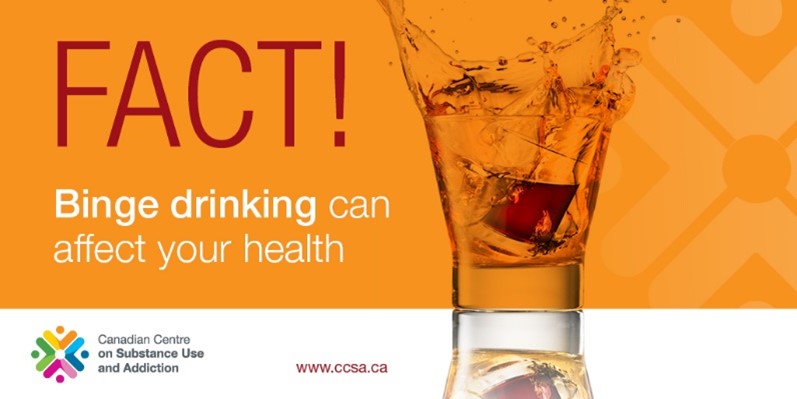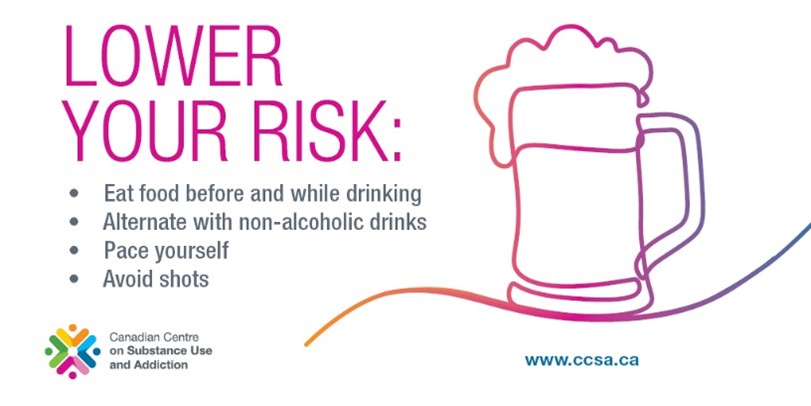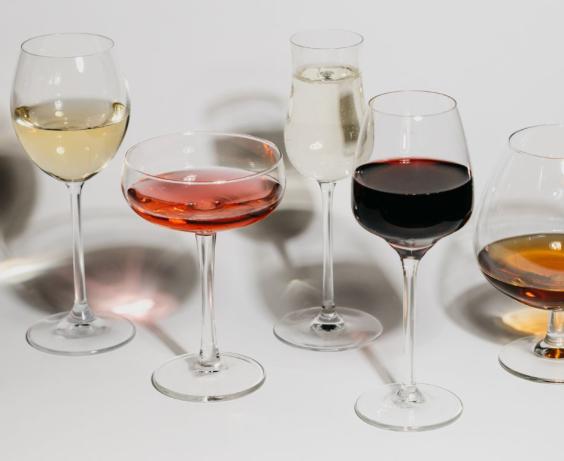Health Impacts of Alcohol
Alcohol carries a special social and cultural significance in Canada. It is also the most commonly used substance. While drinking is a personal choice, those that do choose to consume alcohol might not be aware of all the short- and long-term health risks. Drinking beyond one’s limits can result in confusion, loss of coordination, chronic illness and impact to the brain.
Heading
Canada’s Guidance on Alcohol and Health, Public Summary: Drinking Less Is Better (Infographic)
Summarizes the recommendations in Canada’s Guidance on Alcohol and Health in simple terms and illustrations. Offers concise, image-based explanations of the risks ...
Heading
Lifetime Risk of Alcohol-Attributable Death and Disability
Examines the lifetime risk of death and disability for various levels of alcohol consumption. The report also examines separate alcohol guidelines for males and females...
Heading
Sex, Gender and Alcohol: What Matters for Women in Low-Risk Drinking Guidelines? [report]
Reviews recent research on the effects of alcohol through a sex and gender lens. With a focus on women, it examines the sex-specific effects of alcohol on male and female bodies...
Heading
Effect of Alcohol Consumption on the Development of Depression, Anxiety and Suicidal Ideation: Update of a Systematic Review [report]
Assesses the link between alcohol consumption and the development of depression, anxiety and suicidal ideation. The review includes longitudinal studies with a time element...
Youth and Alcohol
Many youth experiment with alcohol. According to the Canadian Student Tobacco, Alcohol and Drugs Survey 2016-17, Canadian youth in grades 7-12 started drinking at age 13.4. The average age of first having five drinks or more at one time was 14.5 years. By grades 10-12, 64.5% of youth had used alcohol.
According to CCSA's summary on Youth and Alcohol, young people might not be familiar with the effects of alcohol, which puts them at risk. Due to the stage of brain development, youth can also be more impulsive. Instead of drinking in moderation regularly, most young people occasionally binge drink, which can lead to bad decision making such as driving while impaired by alcohol and, in some extreme cases, to emergency department visits.
Alcohol Public Education for Youth
We want youth to have the information they need to make informed choices about alcohol and know how to lower the risks to their health if they use it. CCSA conducted focus groups with youth aged 18 to 24 to better understand how to tailor messaging for young people about alcohol consumption and harm reduction.
What we heard:
- Youth shared their perception that Canada’s current Low-Risk Alcohol Drinking Guidelines do not align with youth drinking culture.
- Youth-targeted alcohol education needs to focus on providing facts.
- Youth use alcohol and partying with their friends as a reward system after working hard.
Youth perspectives and input supported the development of public education resources on alcohol tailored for them. This project illustrates the importance of meaningful engagement with youth in co-developing knowledge products for them.
Read the full report, Alcohol Education Tailored for Youth: What We Heard. Below, you can view and download the social media content created as part of this project.
To view and download any of the full-size social media images, click on the thumbnails below. Copy and paste the text below each thumbnail for a ready-to-use social media post.
Binge Drinking

It’s a fact that #bingedrinking can affect your health. If you plan to drink #alcohol, try our tips to lower your risk:
Eat food before and while drinking
Pace yourself
Alternate with non-alcoholic drinks
Learn more: Knowing Your Limits with Alcohol: A Practical Guide to Assessing Your Drinking
Low-Risk Drinking Tips

Drinking too much, too quickly in a short period of time can increase your risk of blacking out, getting injured and even having long-term #health problems. Our #alcohol tips can help you to lower these risks. #knowthefacts
More info: Knowing Your Limits with Alcohol: A Practical Guide to Assessing Your Drinking Alcohol
Costs of Alcohol Use
According to the alcohol drug summary, 78% of the general population (aged 15 and over) reported alcohol past-year use in 2017. Alcohol can result in numerous health impacts. It also contributes to the overall cost of substance use. The greatest impact is in lost productivity and healthcare costs. Other sectors impacted include criminal justice, business and industry, as well as research and prevention, damage to property and motor vehicles, and workplace costs. From 2007 to 2014, alcohol contributed:
- $14.6 billion to the overall cost of substance use
- $5.9 billion to lost productivity
- $4.2 billion to healthcare
- $3.2 billion to criminal justice
Demographic Trends for Alcohol Use
Canadian alcohol use has remained relatively stable since 2010. Past year use among the general population (aged 15 years and older) was 78% in 2017. While there is no difference in use rates between sexes (79% for males and 77% for females in 2017), increasing numbers of women are reporting past-year alcohol use (73% in 2015 compared to 77% in 2017). In addition, young adults (aged 20 to 24) are more likely to report past year use (83%) than youth aged 15 to 19 (57%) and adults aged 25 years and older (79%).
Post-secondary Student Perceptions on Alcohol
Students often have inaccurate perceptions about alcohol. According to the report on Heavy Episodic Drinking Among Post Secondary Students, they often misjudge how much and how often others drink. Some also think that their friends approve of drinking. These misperceptions can affect their drinking behaviour and lead them to drink more. Some students also mistake their drinking limits, which increases their risk of experiencing harms related to drinking.
Moreover, many students participate in pre-drinking which is drinking before going to a larger party or bar. Pre-drinking can result in negative consequences due to the uncontrolled environment and the excessive drinking that often takes place.
In general, these perceptions can play a role in how students view their drinking experiences. Some perceptions and experiences that post-secondary students noted about alcohol include:
- Heavy episodic drinking is not a serious issue;
- Drinking is a positive experience;
- Drinking has minimal health or safety risks;
- Having negative experiences, such as blackouts, injury, non-consensual sex and vomiting; and
- Using alcohol as a coping mechanism for stress or anxiety



